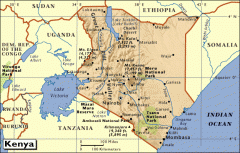Home-baked boutique coffee (4) Yega Xuefei, Ethiopia

When it comes to coffee, friends who like coffee all know the name "Ethiopia", and when it comes to Ethiopia, "Yejasuefei" is a highly related word-Ethiopia Yejasuefei is favored by millions of coffee lovers for its rich fruit and flower fragrance, bright acidity and strong chocolate flavor. Yirgacheffe in English is actually a famous coffee producing area under sidam in southern Ethiopia, while beans in different small producing areas have their own characteristics due to different microclimates and different ways of planting and processing, such as the Mingjia idido.
About the origin:
Farm profile: coffee characteristics:
Name of the farm: small farmers grow
Town: Idido town, Gedio area
City: yirgacheffe
Region: Sidam
Country: Ethiopia
Altitude: 1800 m
Cultivation method: organic cultivation of small farmers
Variety: heirlooom&longberry
Picking method: picking by hand
Treatment: natural drying
Taste: typical lemon aroma, bright acidity, citrus flavor, medium mellow, medium baked fruit is rich, deep baking has almond and cinnamon flavor and is more mellow.
Idido is a coffee produced in a place called Idido Fog Canyon near a small town called Idido. It is more than 1800 meters above sea level and foggy. Coupled with the natural traditional native species and the post-treatment of organic cultivation and natural drying by small farmers, it has long been the unique lemon fruit flavor, rich sweet taste and long finish of Idido, but in terms of bean shape. This bean is also a rare boutique-beans are typical mocha beans. Although they are naturally dried, the beans are very uniform and clean, and the bright color is more attractive after baking.

It is worth mentioning that most of Yega Xuefei are processed by water washing, but this Idido is processed by natural drying: the ripe fruit picked by hand is put on the elevated bed in the sun field after drying, and then the peel is removed, and then hand-selected to remove defective beans. Compared with the washing method, this method will enrich the flavor and retain more fruit flavor. But because it is easy to mix with defective beans, it requires a more elaborate hand selection process.
Such exquisite processing, coupled with the unique geographical conditions of the area (high altitude of more than 1800 meters, cloudy weather, temperature difference between day and night), as well as organically cultivated native species, make the beans grow denser in the process of slow growth and have bright acidity and refreshing fruit flavor that other dry treatments do not have.
Cup review record
Product name: Ethiopia Yirgacheffe Idido Cup Review date: September 29, 2009
Baking degree: high+ Baking date: September 29, 2009
Country of origin: Ethiopia: Yirgacheffe Farm: small farmers in the town of Idido
Grade: grade1 processing method: natural drying mark: orgnic
Taste evaluation:
Aroma, acidity, bitterness, sweetness, balance, mellow, finish and rhyme.
43344345
Comprehensive evaluation:
Rich aromas of tropical fruits, lemon, orange, blueberry, or jasmine
The entrance is pure, and the bitterness of chocolate in the aftertaste is obvious.
Taste characteristics: lemon aroma, fresh and bright acidity
Important Notice :
前街咖啡 FrontStreet Coffee has moved to new addredd:
FrontStreet Coffee Address: 315,Donghua East Road,GuangZhou
Tel:020 38364473
- Prev

Home-baked boutique coffee (3) Kenya
Although as an old neighbor of coffee origin Ethiopia, Kenya did not start its own coffee production until 1893. The first coffee sapling in Kenya was brought by Scottish missionaries from the port of Aden in Yemen. Kenya's coffee industry has been developing since the British colonial period at the beginning of the last century, benefiting from the country's unique geographical and climatic conditions and government.
- Next

Home-baked boutique coffee (5) Harald, Ethiopia
Ethiopia, as the hometown of coffee, plays an important role in the field of coffee in the world because of its superior natural conditions and long history of coffee production and drinking. Coffee was first discovered 1500 years ago in the Kafa region of southern Ethiopia. Up to now, there are still a large number of wild primitive coffee trees in the country, and many farmers have coffee trees in their courtyards.
Related
- What is the meaning of lactic acid fermentation with coffee bean treatment?
- How to judge the state of foam by sound?
- How does the latte pull out the unicorn pattern? Come to get for a little trick to improve the flower pull!
- Will flower pulling affect the taste of the latte?
- Do you know the history of coffee?
- The difference between honey treatment and sun washing what is raisin honey treatment?
- What kind of milk can a novice use to make coffee foam to keep the foam longer? The correct method and skills of milking tutorial sharing
- Why do washed coffee beans taste sour? Flavor characteristics of washed Coffee
- Introduction to the skill of how to practice the size and height of water injection around the circle of hand-brewed coffee
- How do beginners practice coffee flower drawing from scratch?

